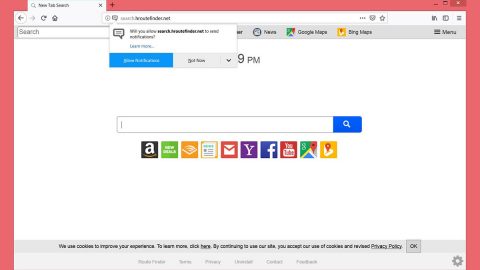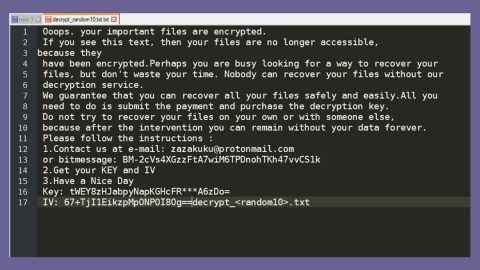Cookies On-Off Extension 1.0.1
We are talking about a program called Cookies On-Off Extension 1.0.1 here. Since it is being classified as a browser hijacker, this software could function in much more explained way:
- The program may infect your computer without your permission and invade and modify your browser apps after that. Neither Explorer, nor Chrome and Firefox can be safe from this kind of software, in fact, all other browsers.;
- It might alter your browsers may redirect you to somewhere on the web: usually a website you have never needed to load or you don’t need at all.;
- More so, such programs may cause the generation of a really big number of cyber ads in the form of banners and pop-ups while you are surfing the Internet which at some point diminish browsing experience.
- Moreover, Cookies On-Off Extension 1.0.1 may even take off the homepage and/or search engine you have set as default and may put (a) new one(s).
More about browser hijackers:
Cookies On-Off Extension 1.0.1 is also considered as one and all its related programs can be regarded as NOT really that dangerous. But still, all browser hijackers most of the times have some really this ability to bring out questionable features such as being able to get access to your browser data records and use these info from there to try to determine what kind of products you will be interested in and together with all the identifiable data will then be sold to the third parties. That being said, only the advertisements matching your tastes will get displayed or advertised. It is a simple marketing strategy that is really effective that could be seen as more or less intrusive and annoying more often than not.
Take note that having the ad generating program and its intensive broadcast of ads might perhaps slow down your device. However, this possible negative and annoying effect depends on the resources of your computer and you are likely to never really experience it.
How to install a bundle without the potential hijacker inside it?
You can get infected through the most typical mistake most users might make that will certainly cause the infection with Cookies On-Off Extension 1.0.1 is to install the wanted piece of software or bundle in one of the following steps:
- Automatic; Default; Recommended:
The features mainly describe the process of automatic installation of the WHOLE CONTENT OF A BUNDLE or ALL THE FEATURES OF ANY PROGRAM. Basically, this means that all kinds of infections are probable, as well as some undesired changes to your computer may occur. - Always select the Customized or the Advanced installation options in order to stay away from the unwanted effects explained above.
How to remove Cookies On-Off Extension 1.0.1
- Go to and open the Task Manger by pressing Ctrl+Shift+Esc. Go to the processes/details Tab and take browse through the resulting list. If you see a process with the name of the unwanted program or looks shady, then right-click on it and choose Open File Location. If you believe it is part of the infection, get rid of the files.

- Use the Winkey+R key combination to open the Run window and type in appwiz.cpl in the search field type. Press Enter and in the resulting list, find recently installed programs that look potentially unwanted. If you find anything – uninstall it right away.

3. Re-open Run and this tie type msconfig and press Enter again and in the resulting window, go to the Startup tab. Look for any shady programs there and if anything looks suspicious uncheck it and then select OK.

4. In the Start Menu search field, then simply copy-paste the following line: notepad %windir%/system32/Drivers/etc/hosts . Open the first result and look at the bottom of the file where it says “Localhost”. If there are any IP addresses below that, you can tell us what they are in the comments since they might be coming from the unwanted software.
5. Type in Network Connections in the Windows search field and hit on the first result. Right-click on the adapter that you are using at the moment and then go to Properties > Internet Protocol Version 4 (TCP/IP) > Properties.

If the DNS line is not set to Obtain DNS server automatically, make sure to check that option.

Now go to Advanced > DNS tab and remove everything in DNS server addresses, in order of use.

6. Right-click on your browser’s icon and select Properties. Delete everything in Target that is after .exe”.

For Chrome users
Close Chrome and go to this folder: C:/Users/*Your username*/AppData/Local/Google/Chrome/User Data. Change the name of the Default folder to Backup Default. Re-open Chrome.
For Firefox users
Open Firefox and click on the Main Menu > Add-ons > Extensions. If you see anything suspicious there, remove it.
For IE users
When you open the browser, go to Tools > Manage Ad-ons and remove the unwanted software if you see it there. Next, go to Tools > Internet options and change the homepage URL to whatever you are normally using.
7. Open Run (Winkey+R), type Regedit and click on OK. Next, press Ctrl+F and type the malware name. Hit Enter and delete everything that gets found.

f there are no results from the search, manually visit those folders in the Registry Editor.
- HKEY_CURRENT_USER/Software
- HKEY_CURRENT_USER/Software/Microsoft/Windows/CurrentVersion/Run
- HKEY_CURRENT_USER/Software/Microsoft/Internet Explorer/Main
If you find there any suspicious keys that have names with a lot of random letters and numbers, delete them or if you are not sure, tell us in the comments what you saw.











